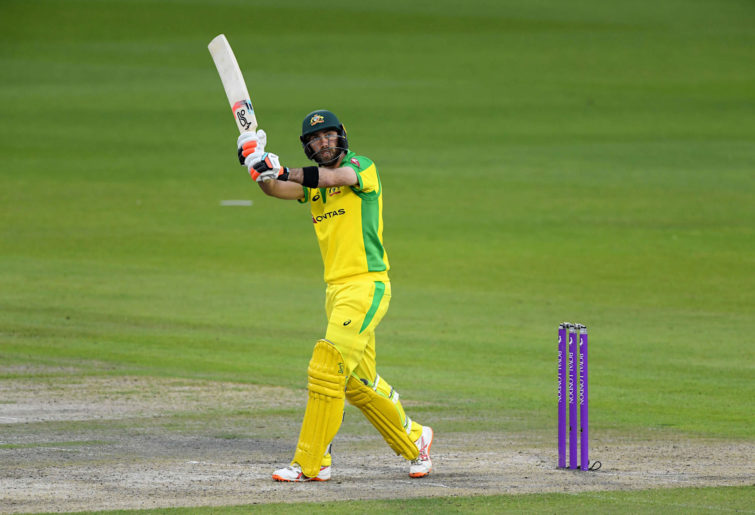World Cup chances up in the air but Smith makes Major call on T20 future, Green dumped despite huge IPL deal
Test great Steve Smith is to play for Washington Freedom in the second season of Major League Cricket as the Australian influence in the…
Opinion
As the summer of cricket creaked to a close in March, the idea of a pandemic was still an abstract one in Australia.
It seemed many still felt it was a crisis an island nation could be immune from. As COVID-19 roared across Europe, 80,000 people were being jammed into the MCG for the final of the womens T20 World Cup, which, in keeping with the rest of the season, the home side had sewn up before sundown.
The mens team hadn’t looked like losing a Test for months. Add to that the fact that we had finally unearthed a number three batsman happy to gorge himself on home runs against inferior opposition, and it was hard to imagine feeling safer.
Then, inevitably, the crowd was locked out for a one-day international at the SCG. Being prior to any thought of enhancing the broadcast, the atmosphere through the TV was decidedly weird. The rest of the series was promptly jettisoned. Hardly anybody noticed. By then, thousands were being turned away at the gate of the Grand Prix, and toilet paper was about to fly from the shelves.
Cricket, especially the coloured clothing variety, wasn’t even an afterthought.
Seeing what was befalling our winter sports, cricket’s governing body must have felt like it had walked out of a building before a plane hit it. Their tribulations had been minor, if not non-existent. When it mattered, the stands, and the broadcast cheque that bankrolls the sport, had been filled. The feeling was the powers that be at Jolimont would be crossing their chests, saying prayers of gratitude, battening down the hatches for the winter.

(Michael Dodge/Getty Images)
Then Cricket Australia stood down 80 per cent of its staff on the basis this summer’s Indian windfall might be imperiled. It was an inexplicable move. Kevin Roberts went on radio to try and explain it and even Gerard Whateley struggled to reconcile what he was getting at.
As our football codes were war-gaming for positive tests and biosecure bubbles, it was now somehow our summer sport enduring a media maelstrom. “The cricket community is shocked, it’s stunned,” said Peter Lalor, who likened CA’s panic to someone driving along a highway, seeing an oncoming truck in the far distance and sending the passengers through the windscreen.
Robert Craddock said it was the worst $3 million anyone had ever saved. Within weeks it was clear that Roberts, a vexed appointment in the first place, would be the next employee to be out of a job.
But that brought no respite from the short stuff. Before night watchman Nick Hockley could get his feet under the desk, the game’s most valuable stakeholder opened fire. Channel Seven’s share price had hit the skids, and they had been feeling buyer’s remorse since almost the moment they bought cricket’s broadcast rights.
The pandemic presented an opportunity to take them back with the receipt. While CA may not have owed the network a favour, with no more free-to-air friends to turn to since blindsiding the others to link up with Seven, many thought a gesture of goodwill would be in the offing. It wasn’t.
“It’s the most incompetent administration I’ve ever worked with,” said Seven’s James Warburton. “It’s a train wreck. We are forced to consider all our options including terminating the contract.
“What a bumbling, stumbling administration.”
Ouch.
Seven was only scorned further once attention turned to the Indian tour and the structure of the schedule. The omnipotent BCCI wished to quarantine all its arriving players at once, meaning the short-form matches would now be swung to the start of the summer, pushing back the network’s main asset — the Test series.
Seven was incredulous. Already sick to the stomach at the size of the cheque they were paying, they felt they were now being asked to play second fiddle to Kayo. When Lewis Martin called for compromise, CA scoffed.
“We have done so much for Seven. It is a worldwide pandemic for god’s sake, Lewis, nobody knows that more than you,” head of broadcast Steph Beltrame would later tell him. A curious comment.
In September, the cricket side emerged from its six-month stupor for a slapdash tour of England. Without crowds, usually intimate and picturesque cricket grounds now resembled inner-city construction sites. Not many sports cope worse with the emptiness. The dead air between deliveries seemed to drag on forever. The camera operators had no clue where to point the lens. The players seemed bored. Glenn Maxwell would bomb 80-metre switch hits that would elicit no reaction.

Glenn Maxwell. (Photo by Stu Forster/Getty Images for ECB)
International cricket is a cultural event that needs the narrative of a city and its public to be present. The stands and the people that fill them are central to the spectacle. Greg Chappell says when he would listen to Test matches on the radio as a boy, he could tell where the game was being played just from hearing the crowd noise. Each theatre had its own sound.
Cricket’s administration has had a shocker.
But on Thursday, the Adelaide Oval’s fervent murmur will bubble into the night. Our players will don the whites. Our lives are getting back on track. We don’t realise how lucky we are.